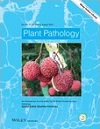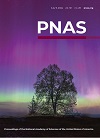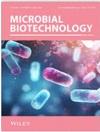Latest Publications
Within-Host Viral Growth and Immune Response Rates Predict Foot-and-Mouth Disease Virus Transmission Dynamics for African Buffalo
 Joshua C. Macdonald, Hayriye Gulbudak, Brianna Beechler, Erin E. Gorsich, Simon Gubbins, Eva Pérez-Martin and Anna E. Jolles
Joshua C. Macdonald, Hayriye Gulbudak, Brianna Beechler, Erin E. Gorsich, Simon Gubbins, Eva Pérez-Martin and Anna E. Jolles
We investigated within-host dynamics and among-host transmission of three strains (SAT-1, -2, -3) of foot-and-mouth disease viruses (FMDVs) in their wildlife host, African buffalo. Our data reveals contrasting within-host dynamics among viral strains, with SAT-2 eliciting more rapid and effective immune responses than SAT-1 and SAT-3. Within-host viral fitness was overwhelmingly determined by variation among hosts in immune response activation rates but not by variation among individual hosts in viral growth rate. Our analyses investigating across-scale linkages indicate that viral replication rate in the host correlates with transmission rates among buffalo and that adaptive immune activation rate determines the infectious period. These parameters define the virus’s relative basic reproductive number (ℛ0), suggesting that viral invasion potential may be predictable from within-host dynamics.
Development of inoculation methods for Pythium violae to evaluate resistance of carrot cultivars and efficacy of crop protection products for cavity spot control
 Nicole Pereira, Kathryn R. Hales, Andrew Mead, Lauren H. K. Chappell, Guy C. Barker, John P. Clarkson
Nicole Pereira, Kathryn R. Hales, Andrew Mead, Lauren H. K. Chappell, Guy C. Barker, John P. Clarkson
In Europe, cavity spot disease continues to have a major impact on marketable yield. The lack of reliable inoculation methods for these Pythium pathogens has, for many years, hampered the identification of new effective crop protection products or carrot varieties that are resistant to the disease. In this research, inoculation methods were developed for P. violae using mycelium or oospores, each of which successfully induced typical cavity spot symptoms in both pot- and field-grown carrots as well as consistent root stunting in the former. These methods were also used to successfully identify carrot cultivars with resistance to cavity spot and confirmed the efficacy of the fungicide metalaxylM against the disease. Results therefore demonstrated that the inoculation methods should be reliable for identifying the efficacy of crop protection products, assessing cavity spot resistance and for further studies investigating the biology and epidemiology of the pathogen.
An atlas of the tomato epigenome reveals that KRYPTONITE shapes TAD-like boundaries through the control of H3K9ac distribution
 Jing An, Rim Brik Chaouche, Leonardo I Pereyra-Bistraín, Hugo Zalzalé, Qingyi Wang, Ying Huang, Xiaoning He, Chloé Dias Lopes, Javier Antunez-Sanchez, Catherine Bergounioux, Claire Boulogne, Cynthia Dupas, Cynthia Gillet, José Manuel Pérez-Pérez, Olivier Mathieu, Nicolas Bouché, Sotirios Fragkostefanakis, Yijing Zhang, Shaojian Zheng, Martin Crespi, Magdy M Mahfouz, Federico Ariel, Jose Gutierrez-Marcos, Cécile Raynaud, David Latrasse, Moussa Benhamed
Jing An, Rim Brik Chaouche, Leonardo I Pereyra-Bistraín, Hugo Zalzalé, Qingyi Wang, Ying Huang, Xiaoning He, Chloé Dias Lopes, Javier Antunez-Sanchez, Catherine Bergounioux, Claire Boulogne, Cynthia Dupas, Cynthia Gillet, José Manuel Pérez-Pérez, Olivier Mathieu, Nicolas Bouché, Sotirios Fragkostefanakis, Yijing Zhang, Shaojian Zheng, Martin Crespi, Magdy M Mahfouz, Federico Ariel, Jose Gutierrez-Marcos, Cécile Raynaud, David Latrasse, Moussa Benhamed
In recent years, the exploration of genome three-dimensional (3D) conformation has yielded profound insights into the regulation of gene expression and cellular functions in both animals and plants. Employing advanced high-throughput sequencing and microscopy techniques, we investigated the landscape of 26 histone modifications and RNA polymerase II distribution in tomato (Solanum lycopersicum). Our study unveiled a rich and nuanced epigenetic landscape, shedding light on distinct chromatin states associated with heterochromatin formation and gene silencing. Moreover, we elucidated the intricate interplay between these chromatin states and the overall topology of the genome. Employing a genetic approach, we delved into the role of the histone modification H3K9ac in genome topology. Notably, our investigation revealed that the ectopic deposition of this chromatin mark triggered a reorganization of the 3D chromatin structure, defining different TAD-like borders. Our work emphasizes the critical role of H3K9ac in shaping the topology of the tomato genome, providing valuable insights into the epigenetic landscape of this agriculturally significant crop species.
Johannes Boltze publications
 Perioperative stroke deteriorates white matter integrity by enhancing cytotoxic CD8 + T‐cell activation
Perioperative stroke deteriorates white matter integrity by enhancing cytotoxic CD8 + T‐cell activation
Yuxi Zhou, Xin Wang, Wen Yin, Yan Li, Yunlu Guo, Chen Chen, Johannes Boltze, Arthur Liesz, Tim Sparwasser, Daxiang Wen, Weifeng Yu, and Peiying Li
Here we explore the regulatory mechanisms of microglia‐mediated cytotoxic CD8+ T‐cell infiltration in the white matter injury of perioperative stroke (PIS). We found surgery aggravated white matter injury and deteriorated sensorimotor deficits up to 28 days following PIS. The PIS mice exhibited significantly increased activation of peripheral and central CD8+ T cells, while significantly reduced numbers of mature oligodendrocytes compared to IS mice. Neutralizing CD8+ T cells partly reversed the aggravated demyelination following PIS. Pharmacological blockage or genetic deletion of receptor‐interacting protein kinase 1 (RIPK1) activity could alleviate CD8+ T‐cell infiltration and demyelination in PIS mice. Surgery exacerbates demyelination and worsens neurological function by promoting infiltration of CD8+ T cells and microglia necroptosis, suggesting that modulating interactions of CD8+ T cells and microglia could be a novel therapeutic target of long‐term neurological deficits of PIS.. CNS Neuroscience and Therapeutics. July 2024
 The association between air pollutant exposure and cerebral small vessel disease imaging markers with modifying effects of PRS-defined genetic susceptibility
The association between air pollutant exposure and cerebral small vessel disease imaging markers with modifying effects of PRS-defined genetic susceptibility
Studies have highlighted a possible link between air pollution and cerebral small vessel disease (CSVD) imaging markers. However, the exact association and effects of polygenic risk score (PRS) defined genetic susceptibility remains unclear. This cross-sectional study used data from the UK Biobank. Participants aged 40–69 years were recruited between the year 2006 and 2010. The annual average concentrations of NOX, NO2, PM2.5, PM2.5–10, PM2.5 absorbance, and PM10, were estimated, and joint exposure to multiple air pollutants was reflected in the air pollution index (APEX). Air pollutant exposure was classified into the low (T1), intermediate (T2), and high (T3) tertiles.. Our study demonstrated that air pollutant exposure may be associated with CSVD imaging markers, with females being more susceptible, and that PRS-defined genetic susceptibility may modify the associations of air pollutants.
Coevolutionary analysis of Pseudomonas syringae–phage interactions to help with rational design of phage treatments
 Mojgan Rabiey, Emily R. Grace, Paulina Pawlos, Muscab Bihi, Haleem Ahmed, Georgina E. Hampson, Amna Al Riyami, Leena Alharbi, Rosa Sanchez-Lucas, Naina Korotania, Maria Laura Ciusa, Olivia Mosley, Michelle T. Hulin, Laura Baxter, Sabrine Dhaouadi, Diana Vinchira-Villarraga, Robert W. Jacks
Mojgan Rabiey, Emily R. Grace, Paulina Pawlos, Muscab Bihi, Haleem Ahmed, Georgina E. Hampson, Amna Al Riyami, Leena Alharbi, Rosa Sanchez-Lucas, Naina Korotania, Maria Laura Ciusa, Olivia Mosley, Michelle T. Hulin, Laura Baxter, Sabrine Dhaouadi, Diana Vinchira-Villarraga, Robert W. Jacks
Pseudomonas syringae pathovar syringae (Pss) is a major pathogen of cherry (Prunus avium) causing bacterial canker of the stem, leaf and fruit, impacting productivity and leading to a loss of trees. In an attempt to find a treatment for this disease, naturally occurring bacteriophage (phage) that specifically target Pss is being investigated as a biocontrol strategy. However, before using them as a biocontrol treatment, it is important to both understand their efficacy in reducing the bacterial population and determine if the bacterial pathogens can evolve resistance to evade phage infection. To investigate this, killing curve assays of five MR phages targeting Pss showed that phage resistance rapidly emerges in vitro, even when using a cocktail of the five phages together. This study shows that understanding the genetic mechanisms of bacterial pathogen resistance to phages is important for helping to design a more effective approach to kill the bacteria while minimizing the opportunity for phage resistance to manifest.
Ancient genomes reveal insights into ritual life at Chichén Itzá
 Rodrigo Barquera, Oana Del Castillo-Chávez, Kathrin Nägele, Patxi Pérez-Ramallo, Diana Iraíz Hernández-Zaragoza, András Szolek, Adam Benjamin Rohrlach, Pablo Librado, Ainash Childebayeva, Raffaela Angelina Bianco, Bridget S. Penman, Victor Acuña-Alonzo, Mary Lucas, Julio César Lara-Riegos, María Ermila Moo-Mezeta, Julio César Torres-Romero, Patrick Roberts, Oliver Kohlbacher, Christina Warinner & Johannes Krause
Rodrigo Barquera, Oana Del Castillo-Chávez, Kathrin Nägele, Patxi Pérez-Ramallo, Diana Iraíz Hernández-Zaragoza, András Szolek, Adam Benjamin Rohrlach, Pablo Librado, Ainash Childebayeva, Raffaela Angelina Bianco, Bridget S. Penman, Victor Acuña-Alonzo, Mary Lucas, Julio César Lara-Riegos, María Ermila Moo-Mezeta, Julio César Torres-Romero, Patrick Roberts, Oliver Kohlbacher, Christina Warinner & Johannes Krause
Here we present genome-wide data obtained from 64 subadult individuals dating to around AD 500-900 that were found in a subterranean mass burial near the Sacred Cenote (sinkhole) in the ceremonial centre of Chichén Itzá. Genetic analyses showed that all analysed individuals were male and several individuals were closely related, including two pairs of monozygotic twins. Twins feature prominently in Mayan and broader Mesoamerican mythology, where they embody qualities of duality among deities and heroes, but until now they had not been identified in ancient Mayan mortuary contexts. Genetic comparison to present-day people in the region shows genetic continuity with the ancient inhabitants of Chichén Itzá, except at certain genetic loci related to human immunity, including the human leukocyte antigen complex, suggesting signals of adaptation due to infectious diseases introduced to the region during the colonial period. Nature. June 2024
